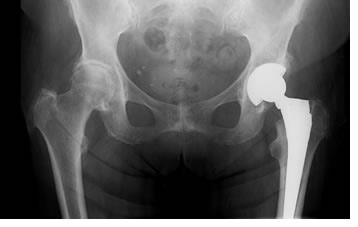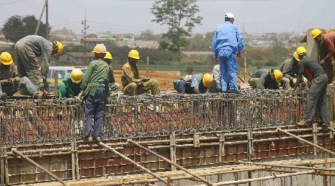Once considered to be high-tech operations, the knee & hip joint replacement have become a routinely done surgery because of the advancement in the technology as well as availability of superior implants for use in place of the worn out or damaged natural joints in the human body. Today millions of such operations are done each year the world over. The studies have shown that over 90% of these patients get benefitted in the form of relief from pain and better mobility because of lesser stiffness but these replacements do come with their share of complications. Some of the complications which can be encountered by the patients, post hip replacement surgery are listed below.
- The Hip Joint can get Loose
It is one of the most common problems which can occur in patients who have undergone hip joint replacement surgery. The problem can arise either because the bone surrounding the implant becomes thin or the shaft of the prosthesis can become loose in the thigh bone. The hip joint can get loose at any time but normally the problem may arise after 10-15 years of surgery. It may result in pain in the joint and a feeling of instability while standing or walking. The patient may require another surgery but it may not be always possible to do so and one factor can be the cost of hip replacement in Australia.
- Dislocation of the Prosthesis
In a small percentage of cases, the hip joint can get dislocated and may come out of the socket. The likelihood of this kind of problem is within first few months of the operation itself. Another operation would be required in such an incident to fix the problem.
- The Wear & Tear of the Hip Joint
Though the artificial hip-joints are supposed to last for quite a long time but with the passage of time, the prosthesis starts getting wear and tear and it has been observed that metal-on-metal joints wear off more quickly and that’s why the MHRA advises that these kinds of implants should be checked regularly on annual basis or as and when required, with the help of x-rays and imaging.
- Stiffening of the Joints
Soft tissues around the replaced joints can get hardened and thereby causing stiffness and reduced mobility though this problem is not painful. It can be reduced with the help of the medicines and localized radiation.
- Development of a Blood Clot
Like in any other major surgery, there is a small chance that patient may develop a blood clot during the initial post-op period of few months because of the restricted mobility during this time. It may develop in either leg of the patient, called Deep Vein Thrombosis or in the lungs which is known as Pulmonary Embolism. To avoid these kinds of problems, the patients are either advised to use compression stockings or they are put on blood thinning medication.
- Development of Infection
In spite of all the precautions taken there could always be some bacteria which sneaks into the operated area and causes infection. This must be taken care of on priority.















